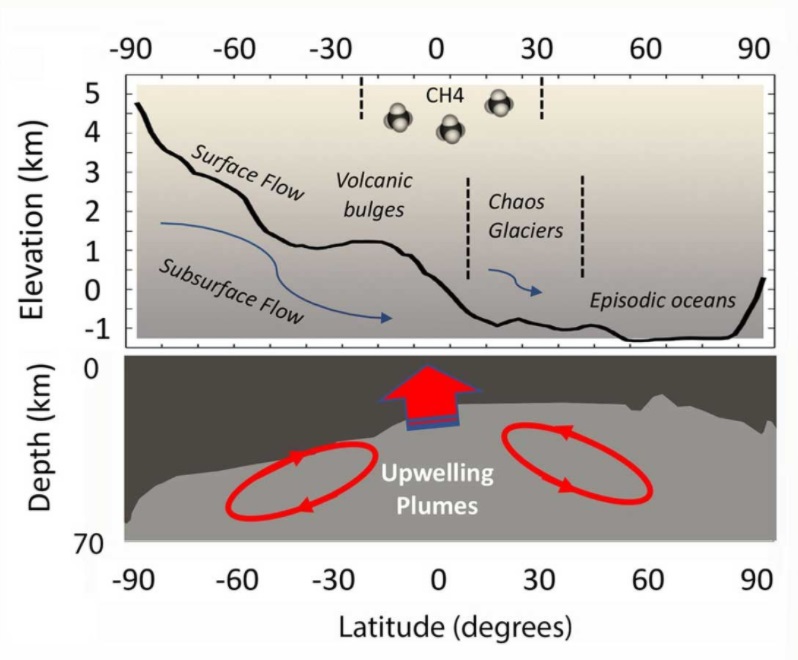
Nathalie Cabrol is director of the Carl Sagan Center for Research, part of the SETI Institute in Mountain View, California. SETI stands for the search for extraterrestrial intelligence. So it shouldn’t come as a surprise that a comment by Cabrol – published March 16, 2021 in the journal Nature Astronomy – challenges some scientists’ assumptions about life on Mars today. Cabrol argues that microbial life could be widespread on Mars, although we earthlings haven’t found it yet. Her argument is that – over the past 4 billion years – microbial Martian life might have migrated underground. If so, then landers such as Perseverance and the soon-to-come rover from China’s Tianwen-1 mission – along with future human missions to Mars – might indeed find life on modern Mars.
Read more: Early science results, and more sounds, from Perseverance Mars rover
Read more: New images from China’s Tianwen-1 at Mars
Cabrol’s study of a possible biosphere – a life-supporting region on modern Mars – stems from her studies of life in some of Earth’s harshest environments. For decades, scientists have studied what they call Mars analogs, places on Earth that come as close as possible to conditions on Mars, which is a cold, dry, desert world. So Antarctica, for example, has been studied as a Mars analog, and so are the extreme environments in the Chilean altiplano, which is the area where the Andes are the widest and is the most extensive area of high plateau on Earth outside Tibet. From that experience, she learned that a landscape that looks dead might support life:
You can walk on the same landscape for miles and find nothing. Then, maybe because the slope changes by a fraction of a degree, the texture or the mineralogy of the soil is different because there is more protection from UV, all of a sudden, life is here.
What matters in extreme worlds to find life is to understand the patterns resulting from these interactions.

Of course, earthly life depends on water, and thus water is an important factor to consider when looking for life as we know it on any other planet. But Cabrol notes that, in addition to water, what matters most inthe search for life on Mars is:
… how extreme environmental factors such as a thin atmosphere, UV radiation, salinity, aridity, temperature fluctuations and many more interact with each other, not only water.
Follow the water is good. Follow the patterns is better.
According to Cabrol, it’s the interaction that:
… unlocks life’s distribution and abundance in those landscapes. That does not necessarily make it easier to find, as the last refuges for microbes in extreme environments can be at the micro- to nanoscale within the cracks in crystals. On the other hand, observations made in terrestrial analogs suggest that these interactions considerably expand the potential territory for modern life on Mars and could bring it closer to the surface than long theorized.
Read: Radar reveals 3 more subsurface polar lakes on Mars

Cabrol believes that finding life on Mars today is tied to what happened on the planet in the past. She looks at the 4-billion-year time span as a continuum of how life might have migrated from one region to another. While it’s important to look at where life could survive today, she said, it’s also important to understand how it might have dispersed and adapted over the entire history of the planet. Some 3.6 billion year ago, rivers, oceans, wind and dust storms could have spread microbial life to anywhere on the red globe. Cabrol said:
Dispersal mechanisms still exist today, and they connect the deep interior to the subsurface.
While at first glance Mars may appear to be a dead world, life could be anywhere we look. With human missions to Mars in the planning stages, Cabrol sees a looming deadline for us to retrieve pristine samples from Mars.

Bottom line: SETI’s Nathalie Cabrol believes a widespread biosphere exists on Mars that has migrated underground over the past few billion years.
Source (Cabrol’s comment in Nature Astronomy): Tracing a modern biosphere on Mars











